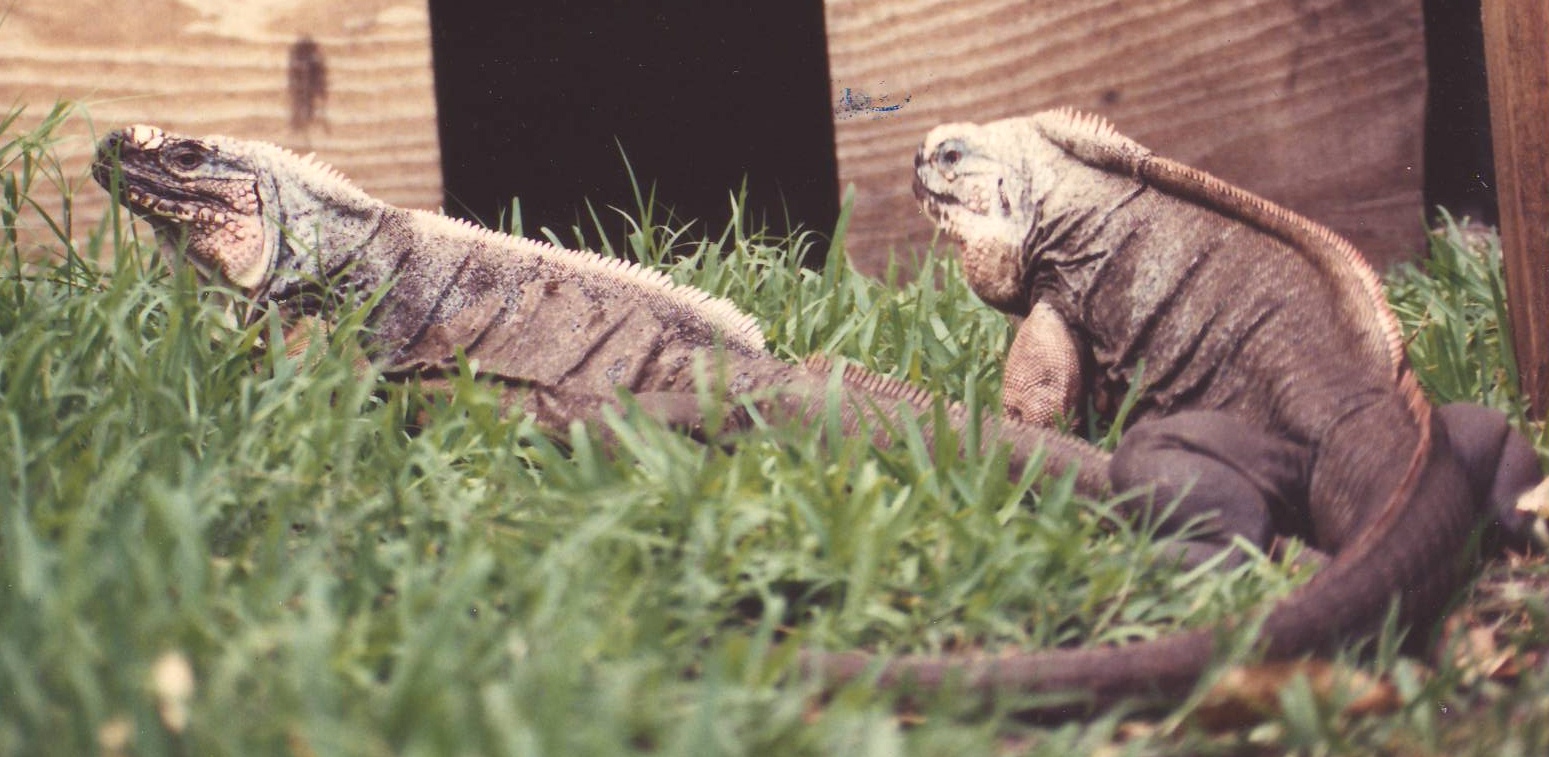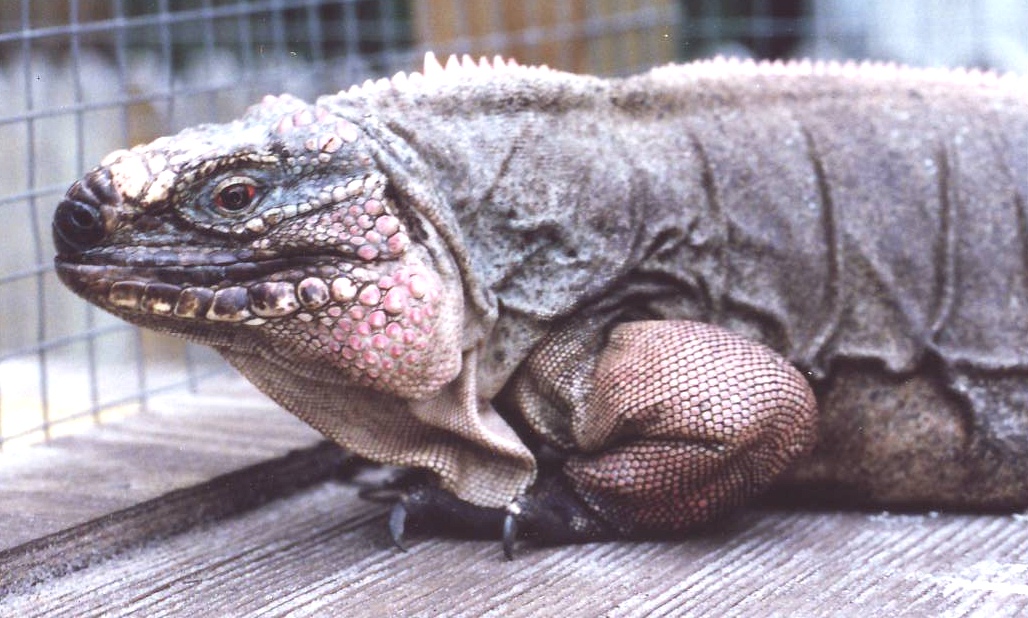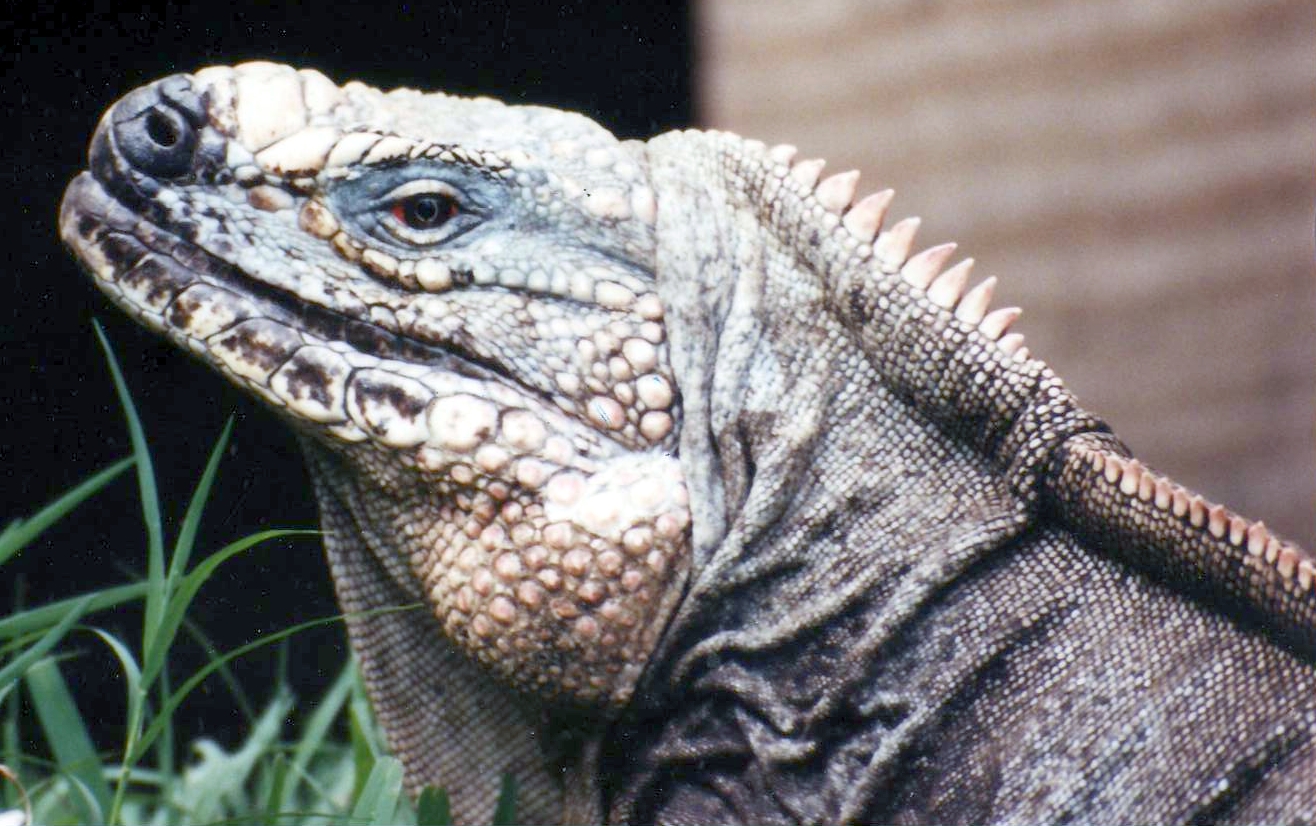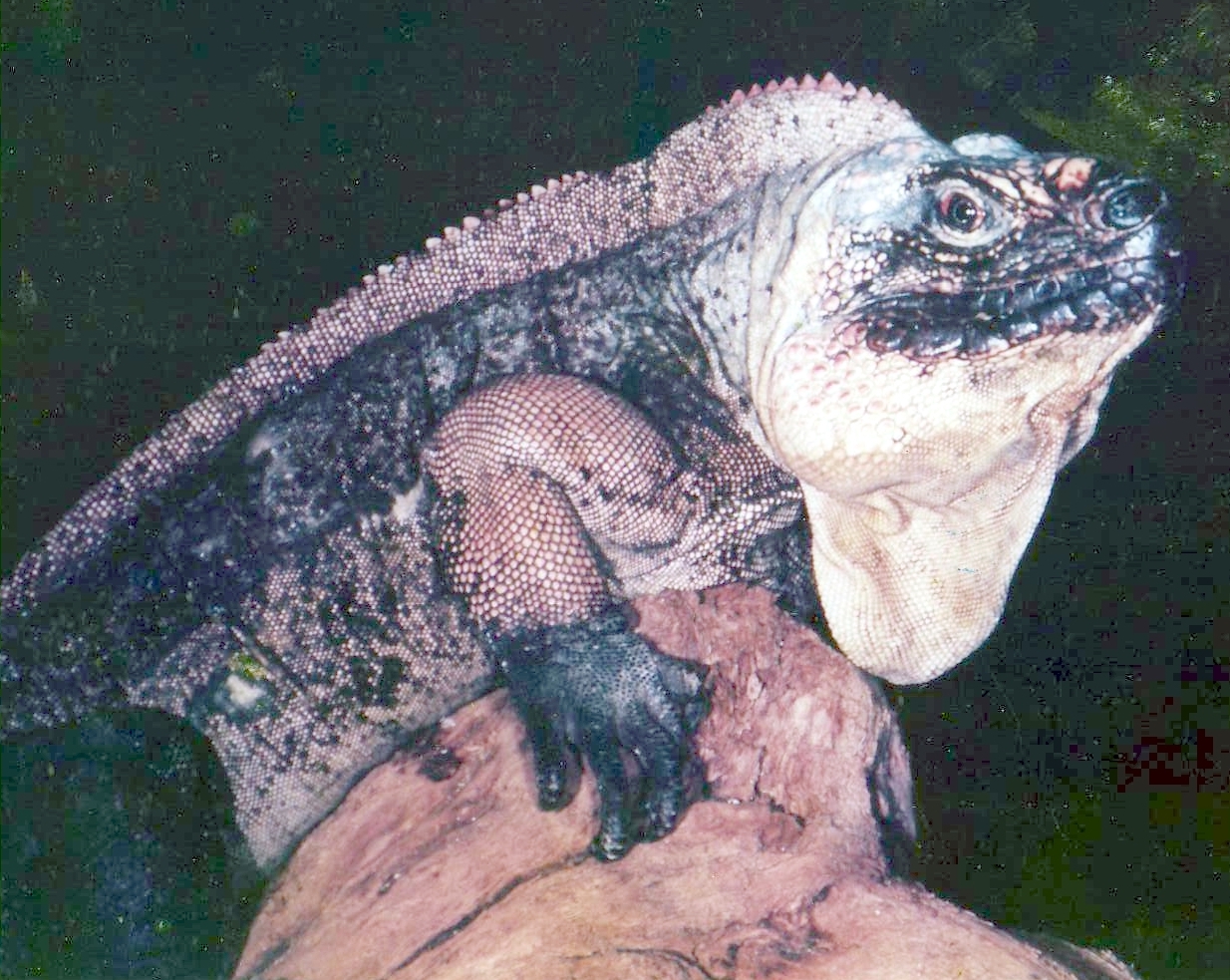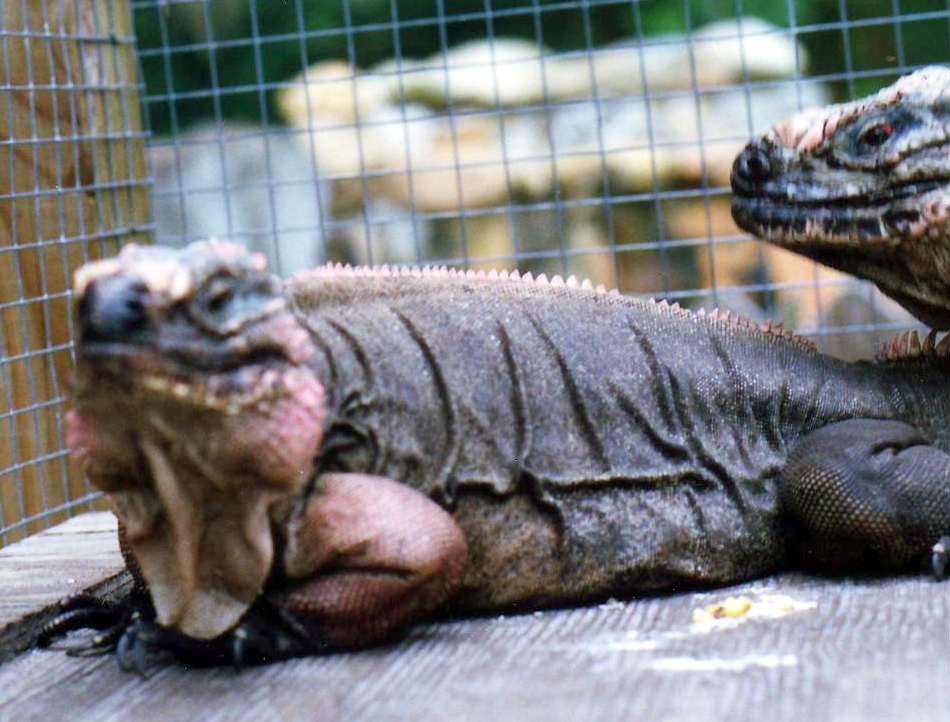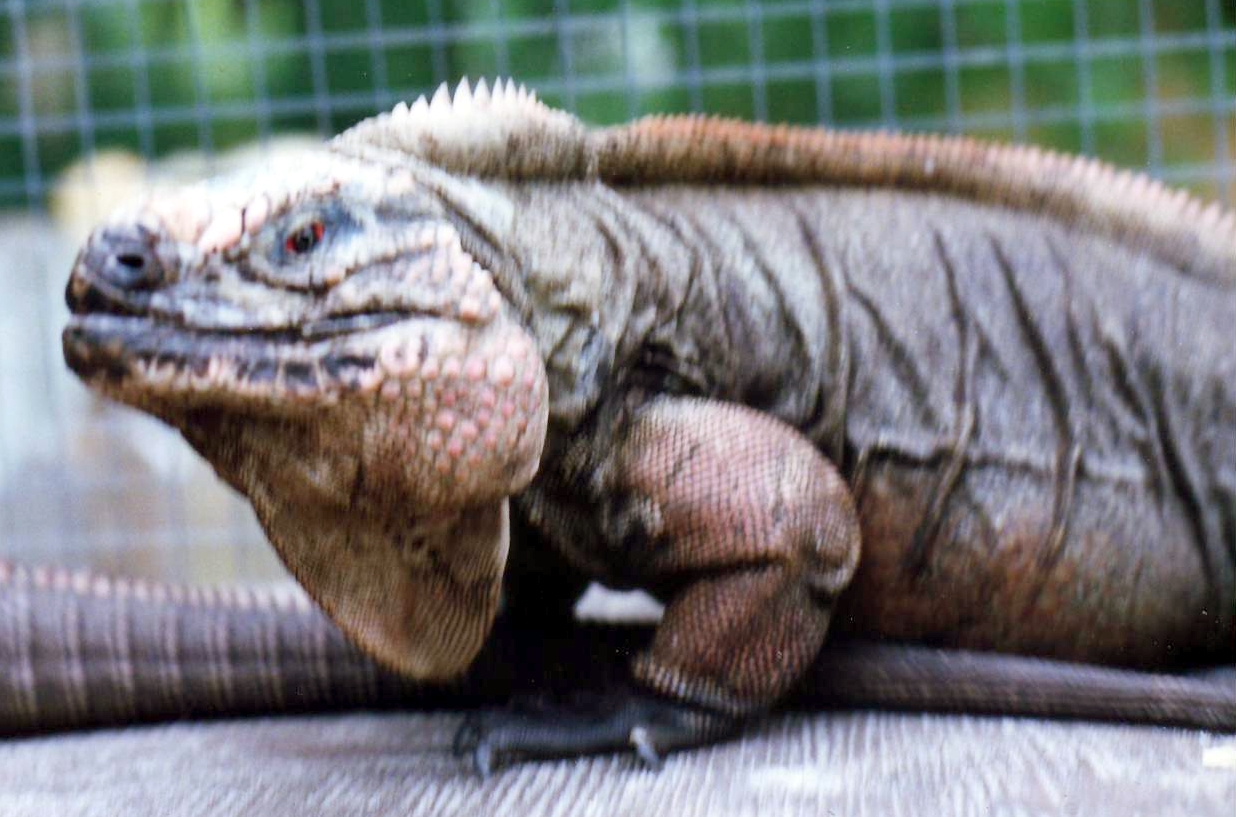Figginsi
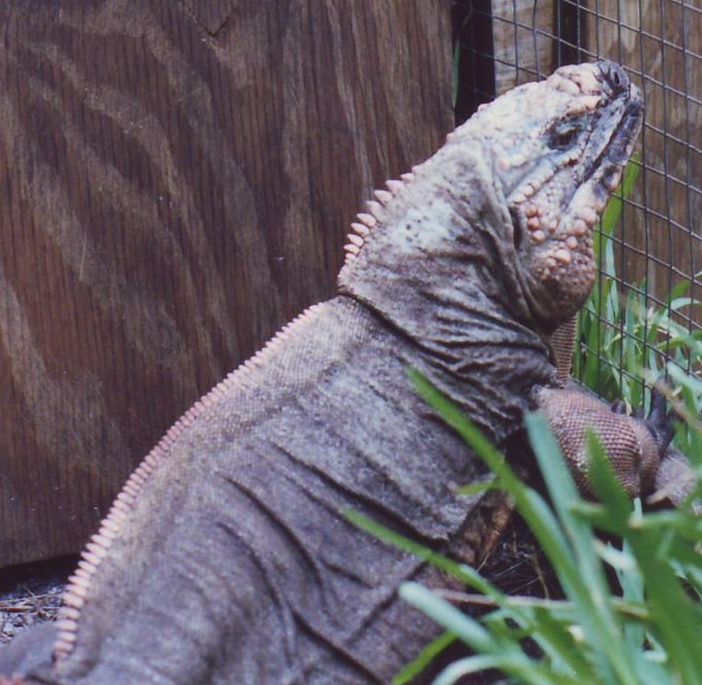
The Exuma Island Iguana is the smallest of the three subspecies of C. Cychlura. It attains a total length of close to 1 m (3.3 ft). Its coloration is dark-gray to black, with white or orange tinged scales on the head and snout depending upon which cay the iguana is from.
Male Exuma Island Iguanas, like other species within the genus Cyclura, are larger than females and have more prominent dorsal crests in addition to femoral pores on their thighs, which are used to release pheromones. Females have smaller pores and have shorter crests than the males making the animals sexually dimorphic.
Archived - Cyclura Figginsi Videos
Archived - Cyclura Figginsi Descriptions
Taxonomy
The Exuma Island iguana, Cyclura cychlura figginsi, is endemic to the Exuma Cays, it is a subspecies of the Northern Bahamian Rock Iguana (Cyclura cychlura). Its generic and specific names (Cyclura) and (Cychlura) are derived from the Ancient Greek cyclos meaning "circular" and ourá meaning "tail", after the thick-ringed tail characteristic of all Cyclura. Its subspecific name is a Latinized version of American biologist J.D. Figgins' last name.
Anatomy and morphology
The Exuma Island Iguana is the smallest of the three subspecies of C. Cychlura. It attains a total length of close to 1 m (3.3 ft). Its coloration is dark-gray to black, with white or orange tinged scales on the head and snout depending upon which cay the iguana is from.
Male Exuma Island Iguanas, like other species within the genus Cyclura, are larger than females and have more prominent dorsal crests in addition to femoral pores on their thighs, which are used to release pheromones. Females have smaller pores and have shorter crests than the males making the animals sexually dimorphic.
Habitat and distribution
This subspecies is found on at least seven small cays throughout the central and southern Exuma island chain of the Bahamas: Bitter Guana Cay, Gaulin Cay, White Bay Cay, Noddy Cay, North Adderly Cay, Leaf Cay, and Guana Cay. The entire population on Leaf Cay was translocated to Pasture Cay in 2002. The Exuma Island iguana utilizes a variety of habitats from sandy beaches and xeric limestone devoid of vegetation to dry forests. The iguanas use limestone crevices or sand burrows for retreats at night and in adverse weather conditions.
Behavior
Exuma Island Iguanas exhibit an unusual social system for the genus Cyclura; they display neither territorial nor hierarchical behavior. Adult iguanas have been observed basking in large groups without showing any signs of aggression toward one another. Scientists such as W.M. Carey believe that this lack of a social structure allows the population to remain dense under conditions of limited resources because hierarchical social systems on small cays retard genetic variation by restricting prime nesting sites, food supplies, and retreats to a few dominant males.
Diet and longevity
The Exuma Island Iguana, like most Cyclura species is primarily herbivorous, consuming leaves, flowers, berries, and fruits from over 100 different plant species. Favored food plants include Seaside Rock Shrub (Rachicallis americana), Darling Plum (Reynosia septentrionalis), Pride of Big Pine (Strumpfia maritima), Joewood (Jacquinia keyensis), Black Torch (Erithalis fruticosa), Seagrape (Coccoloba uvifera), Silver Thatch Palm (Coccothrinax argentata), White Stopper (Eugenia axillaris), Bay Cedar (Suriana maritima), and the rotting fruit of Seven-year Apple (Casasia clusiifolia). A study in 2000 by Dr Allison Alberts of the San Diego Zoo revealed that seeds passing through the digestive tracts of Cycluras germinate more rapidly than those that do not. This is an adaptive advantage because it allows the seeds to sprout before the end of very short rainy seasons. The Exuma Island Iguana is also an important means of distributing these seeds to new areas (particularly when females migrate to their nesting areas) and, as the largest native herbivores of their island's ecosystem, they are essential for maintaining the balance between climate and vegetation. They actively forage for the feces of the Zenaida Dove (Zenaida aurita) and White-crowned Pigeon (Patagioenas leucocephala). The longevity record in captivity for an Exuma Island Iguana is twenty-three years, six months.
Mating
Mating occurs in May, and a clutch of three eggs is usually laid in June or July, in nests excavated in the sand. Females are known to guard these nest sites until they lay their eggs, after which they abandon them.



